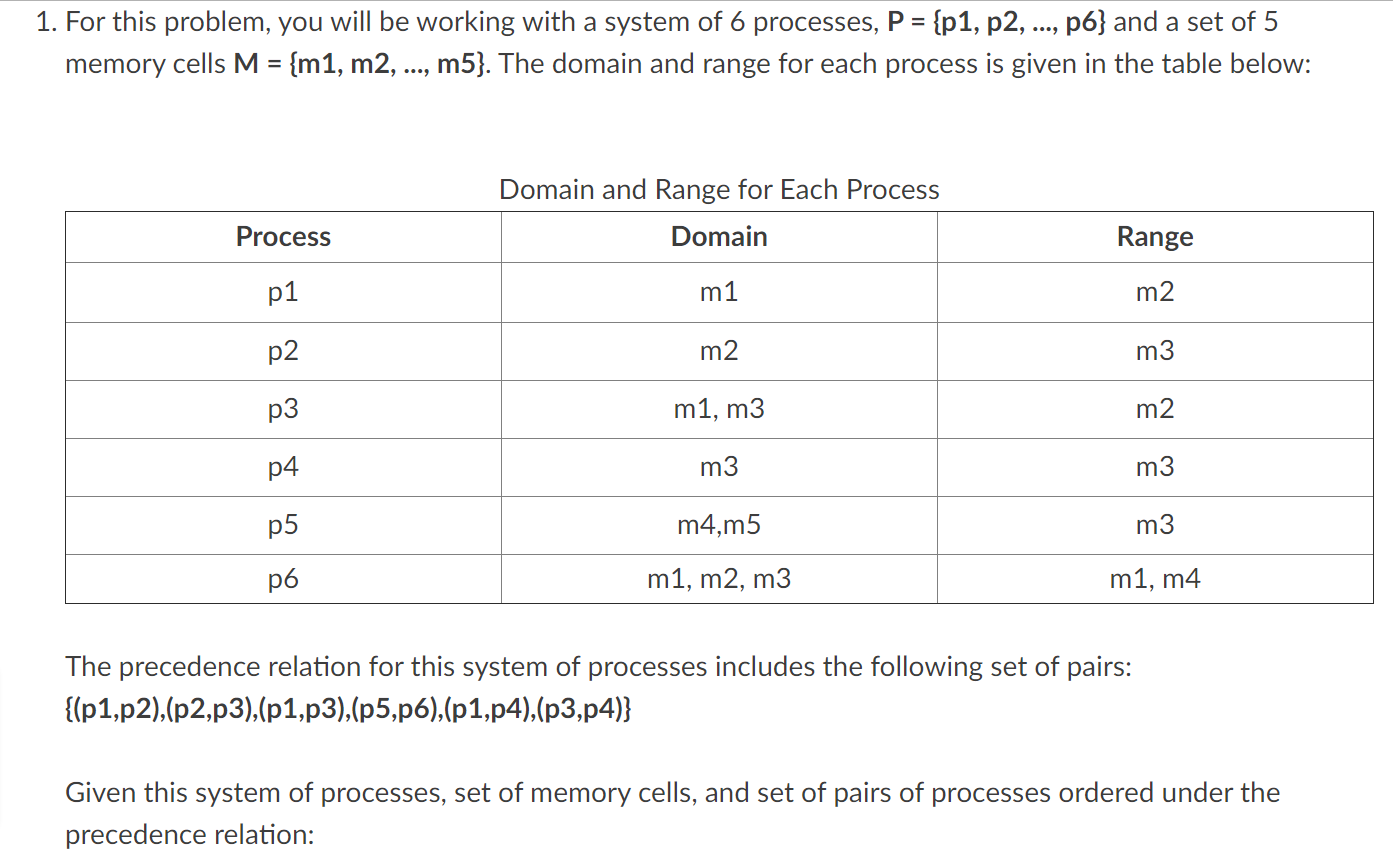Answered step by step
Verified Expert Solution
Question
1 Approved Answer
Question Construct a precedence graph from the precedence relation. Identify any redundant edges in this graph. 1. For this problem, you will be working with

Question
Construct a precedence graph from the precedence relation. Identify any redundant edges in this graph.
1. For this problem, you will be working with a system of 6 processes, P = {p1, p2, ..., p6} and a set of 5 memory cells M = {m1, m2, ..., m5}. The domain and range for each process is given in the table below: Domain and Range for Each Process Domain Process Range p1 m1 m2 p2 m2 m3 p3 m1, m3 m2 p4 m3 m3 p5 m4,m5 m3 p6 m1, m2, m3 m1, m4 The precedence relation for this system of processes includes the following set of pairs: {(p1,p2),(p2,p3),(p1,p3),(p5,p6),(p1,p4),(p3,p4)} Given this system of processes, set of memory cells, and set of pairs of processes ordered under the precedence relation: 1. For this problem, you will be working with a system of 6 processes, P = {p1, p2, ..., p6} and a set of 5 memory cells M = {m1, m2, ..., m5}. The domain and range for each process is given in the table below: Domain and Range for Each Process Domain Process Range p1 m1 m2 p2 m2 m3 p3 m1, m3 m2 p4 m3 m3 p5 m4,m5 m3 p6 m1, m2, m3 m1, m4 The precedence relation for this system of processes includes the following set of pairs: {(p1,p2),(p2,p3),(p1,p3),(p5,p6),(p1,p4),(p3,p4)} Given this system of processes, set of memory cells, and set of pairs of processes ordered under the precedence relationStep by Step Solution
There are 3 Steps involved in it
Step: 1

Get Instant Access to Expert-Tailored Solutions
See step-by-step solutions with expert insights and AI powered tools for academic success
Step: 2

Step: 3

Ace Your Homework with AI
Get the answers you need in no time with our AI-driven, step-by-step assistance
Get Started


